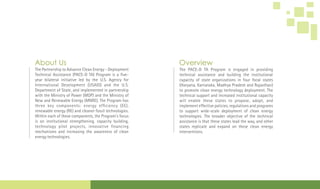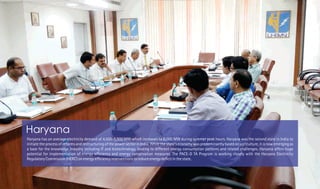The document discusses technical assistance provided by the Partnership to Advance Clean Energy - Deployment (PACE-D) program in the Indian states of Karnataka and Rajasthan. In Karnataka, PACE-D helped develop renewable energy and energy efficiency policies and provided support for BESCOM's solar rooftop and solar irrigation pumping schemes. In Rajasthan, PACE-D is working on enabling frameworks for solar rooftop, infrastructure models for solar parks, and energy efficiency initiatives. The overall goal is to build institutional capacity and promote deployment of clean energy technologies in these states.















